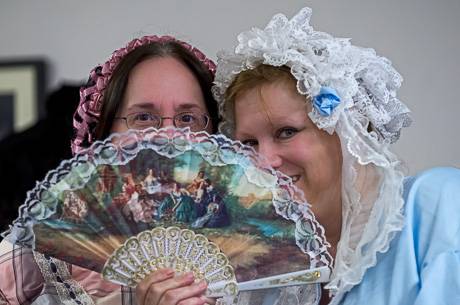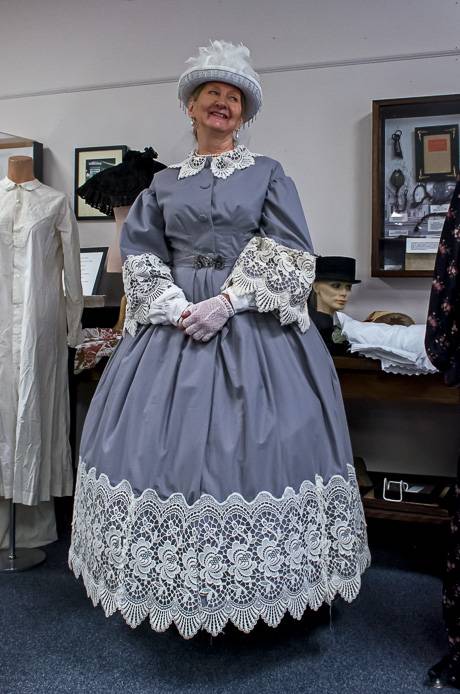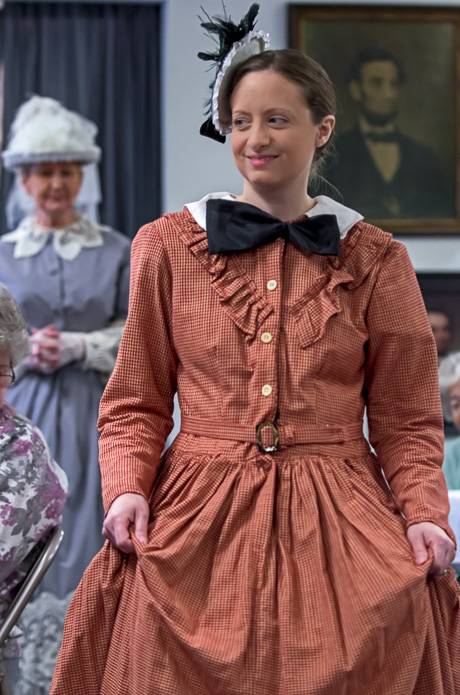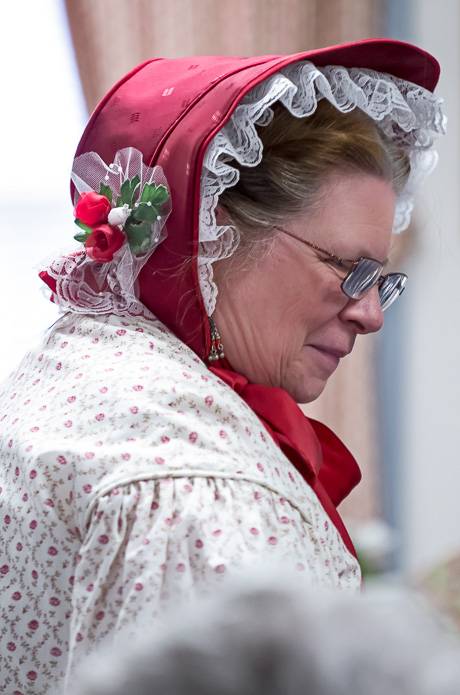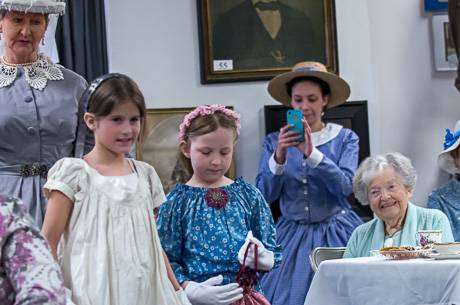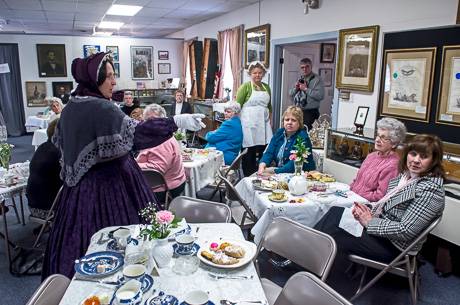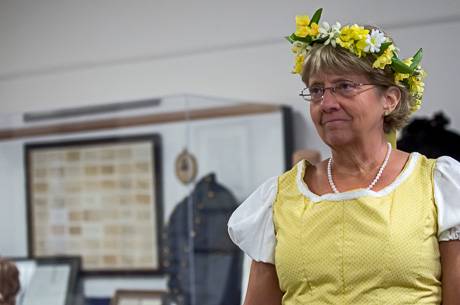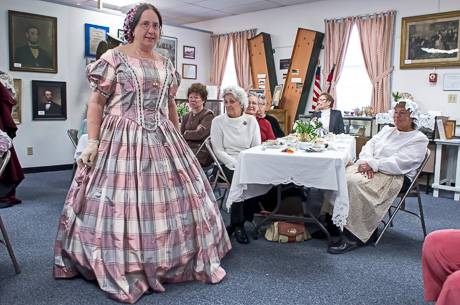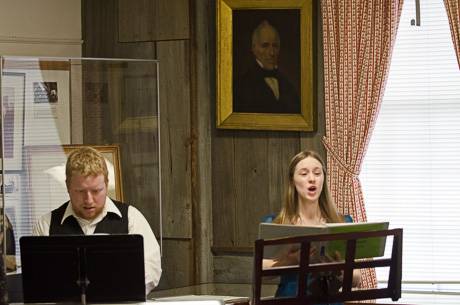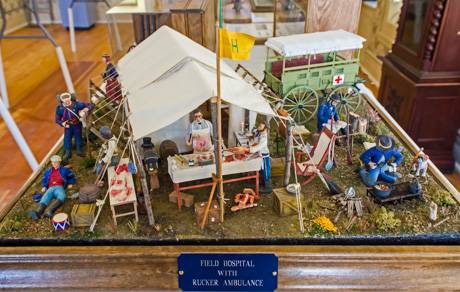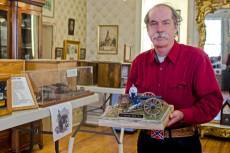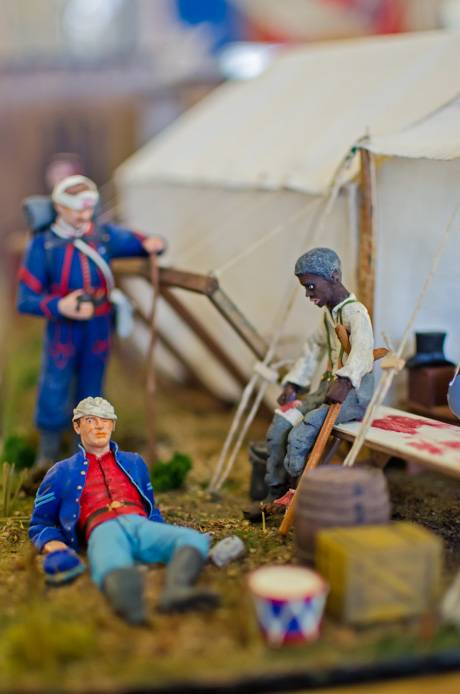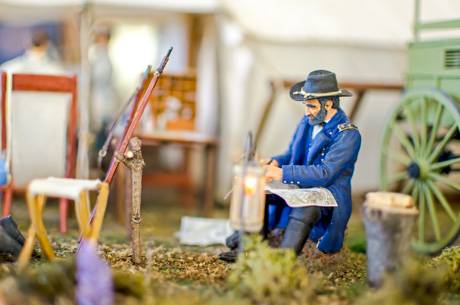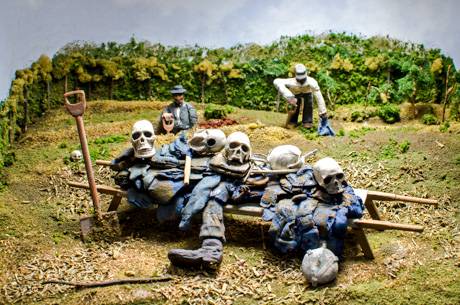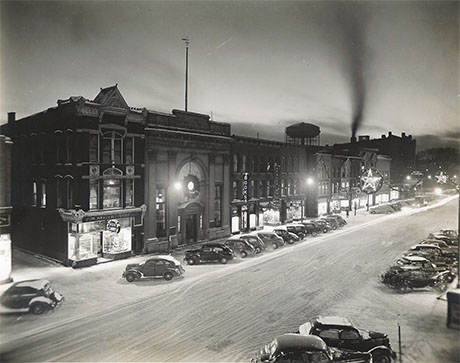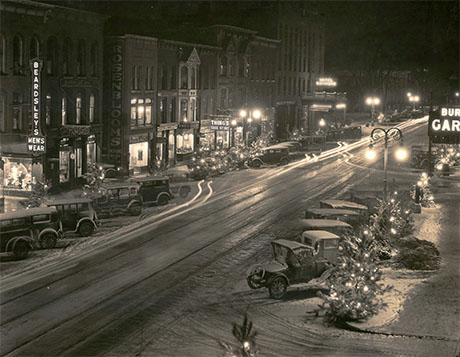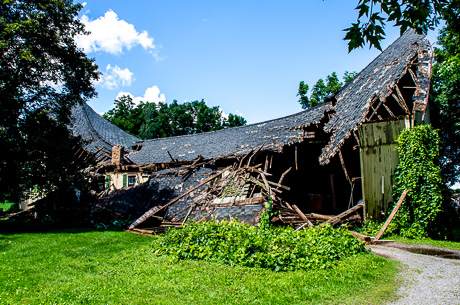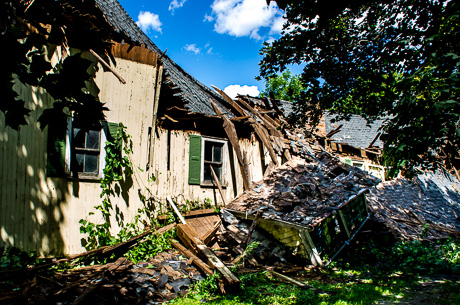Dave Armitage
An Army field hospital during the Civil War must have been a horrid place to be. The stench of curdled blood. Limbs piled under the surgeon's table. The moans of the injured and dying. The acrid aura of death hanging in the air like a fog. The distant sounds of cannons turning more boys into fodder.
Hades holds more joy.
Warfare will always be a horror show, but it will never be like that again. The primitive conditions of a Civil War field hospital are just part of history now.
It's a history that can be found in museums, but not often quite in the way it's on display now at the Holland Land Office Museum.
Through April, visitors to HLOM can glimpse a time long ago in color and in 3-D, and in 1/32nd scale, when there was never enough morphine, scalpels were blunt and gangrene left a generation of young men crippled beyond repair.
In a display of dioramas and models created by local artist Dave Armitage, the Civil War comes to life in a way that mere photographs and historians' voluminous accounts can never capture.
We call Armitage an artist because like an artist, he creates, he imagines, he takes the formless and fills a void with a world that we all can share. He's more than just a model maker, though he might be too humble to call himself anything else.
The field hospital, part of a exhibit of dozens of models and dioramas at HLOM, all meticulously pieced together by Armitage, is such a work. It's creative and emotionally charged.
Armitage is originally from Williamsville but has lived in Batavia for a number of years. Since childhood, he's built more models than he can count. "Thousand and thousands," he said.
"People say, 'you've got too much time on your hands,' " Armitage said. "I say, 'no, I haven't got enough.' I've got (a) room in my house filled with unbuilt model kits that filled up two SUVs when I moved. Several thousand dollars worth of unbuilt kits. Some go back to the 1950s, the 1940s and some are made out of wood, not plastic. I figure someday, if I live long enough, I'll build them."
The only models that interest Armitage are those that depict something old, and old means before his lifetime, before the end of World War II.
"Anything after that is in my lifetime," Armitage said. "I mean, I saw it and I've been there. I'm interested in old things. When I was a little kid I was interested in old cars. I always used to draw pictures of old cars."
When he was a kid, his father's friends and relatives would come over to their house and the group would work on old cars. The boy was given model kits to work on -- the Revell Pioneer Series of the 1950s.
By the time Armitage was 17 he had worked enough and saved enough to buy his own Ford Model T, which he restored and still owns, along with three other vintage cars (a 1919 Model T Touring car, a 1925 Model T Depot Hack and a 1926 Star Station Wagon).
The 64-year-old Armitage is also a musician and Civil War reenactor, as is his wife, Donna. He's retired and he spends his time with this hobbies.
"I don't go out for sports. I never did," Armitage said. "I don't watch television very much. I spend all my time building models or playing music or working on old cars."
The Civil War isn't the only war that interests Armitage. He's built models and dioramas for battles scenes from the Crimean War, the American Revolution, the Russian Revolution, World War I and World War II.
"I don't like painting figures from the Napoleonic Era and back because they're too complex," Armitage said. "Their uniforms are too difficult with all the straps and buttons. The Civil War is bad enough."
And war isn't Armitage's only subject. There's old cars, of course, but Armitage also remains fascinated with the horror films of his youth - "Frankenstein" and "Dracula," and even "The Munsters."
In fact, Jeff Donahue, the director HLOM, is talking about displaying Armitage's monster collection around Halloween.
Donahue has been aware for some time that Armitage built models of history and had seen a couple, but never considered a display until Armitage approached him after one of his Civil War music performances at the museum.
"He asked me over to his house and I walked in and I was in shock," Donahue said.
What's on display at HLOM is only a portion of the Civil War collection.
"I had them stacked three or four high at home," Armitage said, "and Donna said, 'you're not building more stuff are you?' and I said, 'yeah.' 'Where you gonna put it?' 'I don't know.' "
The collection has rarely left his home. He's displayed some models at the train museum in Medina and he's taken a few to the Civil War reenactment camps, but they don't draw much attention there.
"I think most of the time people are more interested in watching the battles and the things going on outside," said the soft-spoken Armitage, whose gray mustache is as much a throwback to the 19th Century as some of the models he builds.
The Civil War collection at HLOM covers the panoply of the Battle Between the States. There are miniatures of historical figures from Robert E. Lee and Jefferson Davis to Ulysses S. Grant and Abe Lincoln; there are scenes depicting historic events; scenes depicting behind-the-lines life; and models of the machinery of war, from cannons to submarines.
"Dave has reproduced this to the finest minute detail," Donahue said. "It's shocking in a way, but of course war is shocking and the Civil War was a very horrible time. The man is a very gifted artist and this is artistry."
For many of the models, Armitage has typed up captions in the hopes that people will read and learn a little more about the Civil War.
"If they read half of what I typed up, they might learn something," said Armitage, a man of few words who gets right to the point on any question asked.
It's fascinating to see the old ships of the era, but what's interesting is the variety and number of ironclads and submarines on display.
We grow up learning about the Monitor and Merrimack, but have you ever seen the USS Alligator or the CSS Hunley?
Some of what Armitage builds comes from kits -- the ships and ironclads, for example, but what is often most fascinating and amazing are the scenes he depicts using a combination of kits and scratch-built pieces
The field hospital scene, for example, began with a model kit for a Union ambulance -- a wagon that could carry four wounded men and two medics.
Armitage didn't want to build just an ambulance. He wanted to put it in context.
A good portion of the scene springs from his own imagination and ingenuity, such as the tent, the scalpels and medicine bottles, the light by General Grant, or repurposed pieces, such as the surgeon that was originally a 1930s-era gangster, but Armitage shaved off his overcoat and put a blood-stained smock on him.
The black man sitting all bandaged up was created by Armitage from modeling clay.
On another model, the oars of a rowboat are shaped from soldering iron.
"You've got to think outside of the box," Armitage said. "You see something and think, 'I can make something out of that,' like I save the little brass rings from the ends of guitar strings and all kinds of junk."
Armitage said he has boxes and boxes of junk -- what model makers often call a boneyard -- waiting to be made into something.
When it came time to depict The Andrews Raid (the basis for the Disney movie, "The Great Locomotive Chase"), Armitage used toner from a copier cartridge to get the charred, burned out look on the blown-to-smithereens train station and littered the scene with repurposed former toy trains.
"I couldn't find any suitable Civil War soldiers in fatigues so I used Russian soldiers and shaved off their pockets," Armitage said.
Some of the scenes created by Armitage are inspired by photographs, such as the Matthew Brady picture of skulls and body parts being exhumed from the battlefield at Cold Harbor, Va.
"A lot of the soldiers pinned their names into their coats because they knew they weren't going to survive," Armitage said. These were the days before dog tags. When they dug them up, if they could identify the remains they notified somebody back home and if the family could afford it, they shipped the remains back home and buried him. If not, they reburied him there."
The scene might be shocking to some, but then war is shocking.
"As we've often said, history is not Hallmark," Donahue said. "History is not pretty. The Civil War was perhaps the ugliest times in our country's history.
"(The scene) brings a realization to people of what it was all about. What this country went through at that time. Families were literailly torn apart. The old saying brother fighting brother, well, happened. You didn't know if you would ever see your family members again or what kind of condition they would be in. The amputations, the horrific wounds of the war, due to the type of weaponry being used. Unfortunately, when a person was shot in the arm, many times it exploded the bone and there was nothing left to do but amputation. People died of shock from their injuries.
"It certainly brings home the cruelty of war. Very often people think, it's romanticized. They see the banners and the soldiers all dressed up and they think of maybe 'Gone with the Wind', but even later on in that movie, they showed the cruelty of war, how people were torn up, their lives were disrupted and never the same."
Armitage's work so masterfully captures a time and a place that is part of the fabric of our history that it's easy to get lost in the exhibit.
"I've had visitors come in, and you know, they normally spend five minutes or so to walk through," Donahue said. "With this, they come in and and you get busy working and you realize I haven't seen these people in a while and you go up and you look and they're in here an hour later, just examining every minute detail."
Armitage is grateful HLOM is providing a place for people to come and see his work.
"I'm glad to have stuff on display here because most of the time it just sits around my house and nobody sees it," Armitage said.
